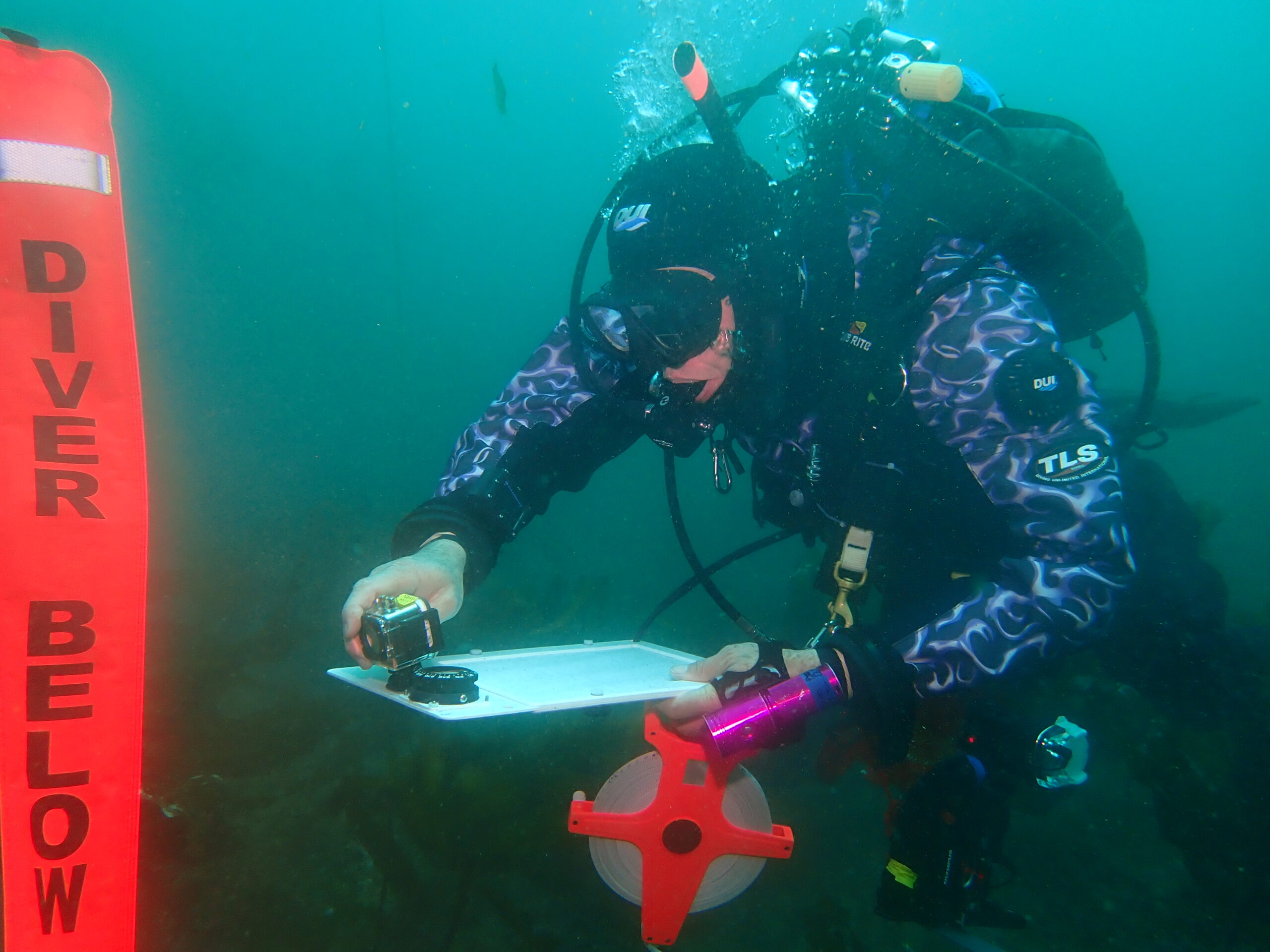Post-Trip Dive Report
Dive_Blog_2024_05_14_AS2
Purpose: Watching El Nino Underwater
May 14 2024
By: William Hagey
Point Loma – Acoustic Site 2 (AS2)
Vessels: Paul’s wonderful boat the Celtic Knott
Topside Support: None
Divers: William Hagey, Ronan Gray, and Jim Melrod
Surface conditions: Short period 1 to 2 foot mixed swell. Grey sky, calm.
Visibility: 30+ ft
Temperature at depth: 50° F
Current: None at the surface and none at the bottom.
Dive #1: Time in: 8:44 am, Dive length 35 minutes
Depth Max: 67 ft
Purpose: To replace the TLC camera, conduct a video transect, take photos and videos, and make observations..
Summary: We swapped out TLCs with O2 sensors and did a video transect. Still images and video were taken by W Hagey, Jim Melrod, and Ronan on his wide angle video camera.
Here’s a video made by Ronan Gray from this dive:
WENU Project Dive May 14 AS2 Site (youtube.com)
Here’s the video made from the time-lapse images from the previous two months:
2024 03 10Thru2024 04 08 AS2 A (youtube.com)
Equipment Notes: There had been no big swell during this deployment so the camera was where we left it. We recovered PMRG1 and Mini DOT697549. The UV-C light was just about to fall off because of corrosion of the aluminum screws. The TLC took good photos for about half of the deployment. It stopped on 8APril2024. I think the issue was that the batteries were not fully charged. There was not much fouling on the window of the camera. Maybe this was because of the UV-C light or maybe because it wouldn’t have fouled any way. This test was inconclusive. Here is how it was set up. It was the first use of SubAqua’s UV-C lights for antifouling. It also has a 9 amp slave light on the right side. It is set for 30 seconds every 12 hours. To save battery power the UV-C light is limited to 100 times for 50 days of protection. The slave light is a 9 watt LED light limited to 5,500 flashes. The TLC was set at a 15 minute interval and O2 readings were set for every 10 minutes.
Note: I measured how long the LED is on per cycle of the TLC and it is about 1.5 to 2.3 seconds per photo. (It varies because the firmware changes it based on the previous cycle.) The slave light will be on for the same amount of time.I may put a slight delay on the firmware that turns on the slave light to save some power and yet still allow time for the auto iris to work. The power calculations are done in the TLC service spreadsheet. It should be about 2.2AH at 14.7V for about 2 seconds per photo and 5,500 photos. So, this uses a lot of power. The UV-LED is running at 6V at 330 mA with a switching current supply from the same 14.7V LiIon battery. Limiting it to 100 on cycles should use about 0.18Ah of power. .
Methods: Ronan, Jim, and I both took photos and videos of the TLCs and around the area. We swam a 50 meter transect at 300 degrees.
Habitat:The habitat seems much the same as last time. It seemed healthy with a good variety. Ironically, since we landed right on the camera we didn’t explore the bottom too much.
Dive Details: Ronan Gray, Jim Melrod and I dove together. We swam down the anchor line and found the TLC as we descended. It was about 20 feet from the anchor! Ronan got video as Jim and I approached the TLC. I took photos of the TLC. I also took photos from on top of the TLC to check the picture. I double checked to make sure the camera was oriented properly. We attached the transect tape to the old TLC and swam a 50M transect at 300 degrees. I notice several juvenile pelagaphycus that were only about 90cm high. I took videos of two of them. There, as before there were more of these of various sizes along the transect. I did a video of the transec with my SJ Camcorder. We finished our tasks with plenty of air.
The adventures of the day: First dive with Jim Melrod on this project. He was very helpful as he is getting acquainted with this project. It is great to be diving with him again!
The top picture is the last one from the previous deployment and the bottom one is the first from this deployment, just ended. Camera angle is very similar.
Top image is PMRG1 as we were removing it and, below, NOAA2 as it was deployed.
O2 and Temp Data above and Ronan back lit the scene that is close to what the TLC will record.
Kelp snail. Just cool looking.
What creature is here? A black sea bass? The next image had a lot of back scatter. Did this mystery object stir up the place?

